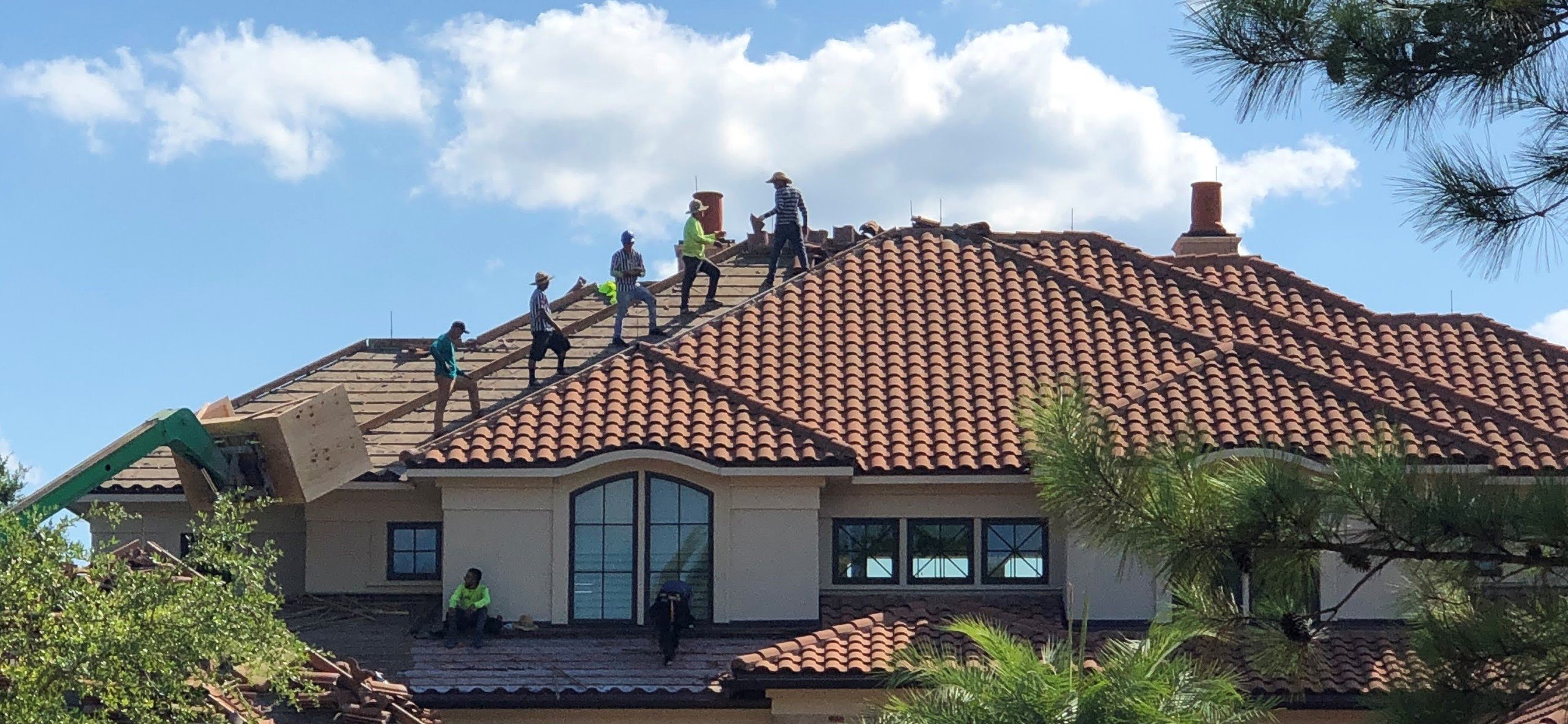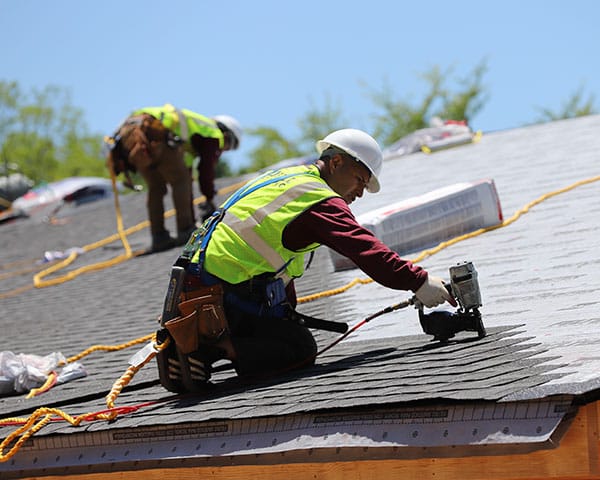Exactly How Gainesville Roofing Companies Can Change Your Home's Outside
Exactly How Gainesville Roofing Companies Can Change Your Home's Outside
Blog Article
Ideal Practices for Ensuring Correct Roof Ventilation
A well balanced intake and exhaust air vent proportion, commonly 1:300, plays a crucial role, with consumption vents preferably put at the lower side of the roofing system for cool air access and exhaust vents at the height for warm air exit. Maintaining insulation away from vents is vital to prevent air flow constraint.
Understand Ventilation Essentials
Properly recognizing air flow fundamentals is crucial for making certain the longevity and efficiency of roof. Effective air flow reduces moisture accumulation and temperature extremes in the attic room, both of which can cause considerable architectural damages in time. A well-ventilated roof helps in stopping typical concerns such as mold growth, wood rot, and ice dams, which can jeopardize the honesty of the roof products and the underlying frameworks.
The primary objective of air flow is to help with the activity of air, permitting a constant exchange between the indoor and exterior environments. This balance is achieved through a combination of consumption and exhaust vents that work with each other to maintain optimum airflow. Consumption vents, commonly located along the soffits or eaves, enable fresh air to go into the attic room area, while exhaust vents, commonly positioned at or near the roof ridge, enable hot, damp air to get away.
Trick elements influencing the performance of roof air flow include correct placement, adequate sizing, and ensuring that both consumption and exhaust vents are unhampered. Normal evaluation and upkeep are essential to identify prospective blockages, damage, or inefficiencies in the ventilation system, consequently protecting the roof's performance and resilience.
Types of Roof Vents
Roof covering vents play a vital function in preserving effective attic ventilation and, by expansion, the total wellness of the roof. Numerous kinds of roof covering vents are readily available, each with unique benefits customized to details roof covering demands. Ridge vents, for instance, are installed along the roofing's peak, permitting cozy, moist air to run away from the attic. They offer continual air flow and mix effortlessly with the roofline, making them both efficient and aesthetically pleasing.

Soffit vents are mounted under the eaves and operate in tandem with roofing vents to ensure a well balanced intake and exhaust system. By allowing cooler air to get in from below, soffit vents promote the expulsion of warm air through top vents. Gable vents, situated on the outside walls of the attic room, offer one more reliable solution, particularly in homes with gable roof coverings.
Assess Your Existing Ventilation

Next, think about the age and problem of your roof link covering products and ventilation parts. Older systems may not conform with existing building ordinance or might have degraded over time, minimizing their efficiency. Conduct a detailed assessment to recognize any kind of signs of deterioration, such as corrosion, damages, or voids that could compromise the system's performance.
In addition, gauge the attic room temperature and humidity levels. Heats and humidity can suggest inadequate air flow - roofing companies. Make use of a hygrometer and thermometer to get precise analyses, contrasting them with outside conditions. Consistent disparities recommend potential concerns that require resolving.
Installment Best Practices
Reliable setup of roofing ventilation systems is vital for guaranteeing optimum efficiency and durability. Appropriate installation begins with understanding the details ventilation demands of the roof and the building it covers. This entails computing the right proportion of intake to wear down vents, normally sticking to the 1:300 policy, which states one square foot of ventilation for every single 300 square feet of attic floor space.

The positioning of vents is just as vital. Intake vents must be installed at the roofing's reduced side, typically in the soffits, to click here for more allow trendy air to go into. Exhaust vents, on the various other hand, ought to be installed near or at the roof's optimal to promote the leave of warm, wet air. This creates an all-natural air movement that aids keep temperature and dampness balance within the attic space.
Seal all air vent links diligently to avoid air leaks and possible water seepage. Use premium materials and comply with producer guidelines to guarantee longevity and performance. Additionally, incorporating ridge vents with baffles can considerably boost airflow efficiency by stopping wind-driven rain and snow from entering the attic room.
Inevitably, exact installation of roof covering ventilation systems reduces prospective concerns such as mold growth, ice dams, and structural damages, ensuring the roofing system's integrity and the structure's general health and wellness.
Routine Upkeep Tips
Consistency in upkeep techniques is fundamental to making sure the long-lasting performance of roofing air flow systems. During these assessments, guarantee that vents are free of debris, nests, and other blockages that could hinder air flow.
Utilize a soft brush or a vacuum to eliminate dirt and debris from intake and exhaust vents. Be mindful not to harm the vent displays or louvers throughout the procedure.
Correct insulation is equally essential. Make certain that attic insulation does not obstruct the vents, as this can significantly restrict air flow. Rearrange or change it to preserve a reliable obstacle. if any insulation has changed or settled.
Lastly, change any type of harmed or missing out on components quickly. Busted vents, broken shingles, or tatty flashing can all add to insufficient air flow and must be dealt with without delay. Normal maintenance ensures that the roofing ventilation system works ideally, thereby extending the life-span of the roof covering itself.
Conclusion
Making sure appropriate roof ventilation is critical for keeping the performance and resilience of a roof covering system. Adherence to the 1:300 intake and exhaust vent ratio, combined with the tactical placement of vents, is crucial.
A balanced consumption and exhaust vent proportion, generally 1:300, plays an essential role, with intake vents preferably placed at the reduced side of the roof covering for trendy air entrance and exhaust vents at the optimal for cozy air leave. Consumption vents, generally situated along the eaves or soffits, permit fresh air to get in the attic room room, while exhaust visit their website vents, usually positioned at or near the roofing system ridge, enable warm, humid air to escape.
Soffit vents are mounted under the eaves and work in tandem with roofing vents to make certain a well balanced consumption and exhaust system. By permitting cooler air to get in from below, soffit vents help with the expulsion of hot air via top vents. Adherence to the 1:300 intake and exhaust vent proportion, coupled with the strategic positioning of vents, is important.
Report this page